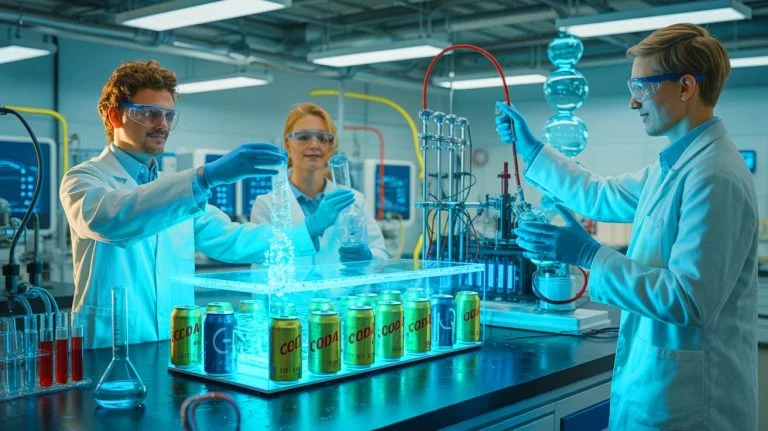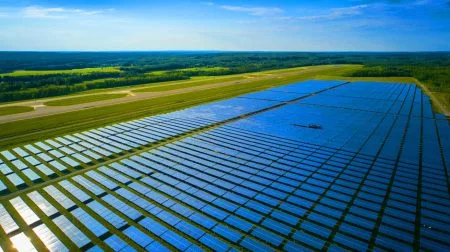| IN A NUTSHELL |
|
In a groundbreaking revelation, researchers from the prestigious Massachusetts Institute of Technology (MIT) have unveiled a revolutionary method to produce clean hydrogen fuel from recycled soda cans and seawater. This pioneering approach not only promises to dramatically reduce carbon emissions but also aims to transform the way we produce and utilize hydrogen. By making the process more accessible and environmentally friendly, this innovation could herald a new era in sustainable energy production.
The Role of Hydrogen as a Clean Fuel
Hydrogen has long been hailed as a promising energy solution for the future, primarily because it can burn without releasing carbon dioxide. However, the challenge lies in the fact that most hydrogen production today relies on fossil fuel-based processes. This is where the new method becomes crucial, offering an alternative that is both greener and more respectful of our planet. The process devised by MIT is based on a chemical reaction between the aluminum found in recycled cans and water. Typically, aluminum is coated with a thin layer of oxide, preventing it from reacting easily with water. The researchers overcame this obstacle by using an alloy of gallium and indium, which effectively removes this protective layer. Additionally, the salt present in seawater aids in recovering and reusing this alloy, making the process even more efficient.
An Eco-friendly and Economical Method
According to a study published in Cell Reports Sustainability, producing one kilogram of hydrogen using this method results in 1.45 pounds of carbon dioxide emissions. In stark contrast, traditional methods based on fossil fuels emit approximately 24 pounds of CO₂ per kilogram of hydrogen produced. Thus, this innovative approach presents a carbon footprint similar to techniques that utilize renewable energy sources. Economically, the estimated cost of producing one kilogram of hydrogen using this technology is about $9. This makes it competitive with other green solutions, such as those relying on solar or wind energy. Not only does this advancement help reduce greenhouse gas emissions, but it also makes hydrogen more affordable and accessible to everyone.
From Theory to Practice
The researchers are already envisioning practical ways to integrate this technology into our daily lives. For instance, pre-treated aluminum pellets could be dispatched to gas stations, where they could be mixed with seawater to produce hydrogen on demand. This would simplify the storage and transport of hydrogen, which is traditionally considered volatile. The potential applications are vast: an autonomous network of hydrogen refueling stations, use in vehicles like electric bikes or small cars, and even in maritime domains with boats or underwater drones. Furthermore, the process generates an interesting byproduct, boehmite, which has applications in the electronics and semiconductor industries.
Environmental Perspectives and Future Projections
This innovation skillfully combines advanced chemistry with efficient recycling, leveraging our natural resources to create truly clean hydrogen. It aligns with a circular bioeconomy approach and could help democratize hydrogen-powered transport while minimizing emissions. As highlighted by experts, this work underscores the potential of aluminum as a clean energy source and provides a scalable pathway for deploying low-emission hydrogen in remote transport and energy systems. By harnessing the power of recycled materials and seawater, this breakthrough holds the promise of a cleaner, more sustainable future.
As we stand on the cusp of a new energy revolution, this method may redefine how we perceive and use hydrogen fuel. With the potential to significantly reduce carbon emissions and make hydrogen more accessible, could this be the key to unlocking a sustainable energy future? How might this innovation change the landscape of renewable energy in the coming decades?
Did you like it? 4.5/5 (26)







This sounds incredible! But how scalable is this technology? 🤔
Is this just a gimmick or a real solution? Color me skeptical!
Wow, using Coke cans for fuel? What’s next, Pepsi-powered planes? 😂
Great article! Thanks for sharing such groundbreaking news.
Does this mean we’ll have to stockpile on soda cans now? 🍹
How long before I can fuel my car with this method?
Sounds too good to be true. Is there a catch?
Why didn’t they think of this sooner? It’s genius!
Are there any potential environmental risks associated with this?
Imagine a world where Coke cans fuel our cars. Unreal!